Click on the map below to learn more

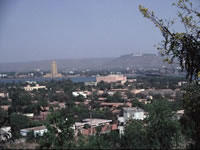 |
Bamako, MaliBamako is the capital and largest city in Mali with over 1.6 million people. It is thought to be the fastest growing city in Africa, and one of the fastest growing cities in the world. Located near the rapids of the Niger River, the name Bamako is roughly translated to "crocodile river." Bamako is home to the 20 story-tall BCEAO Tower, the tallest building in Mali. The BCEAO Tower is the Mali headquarters for the Central Bank of West African States, that provides development funding for the region. |
| Back to Map | |
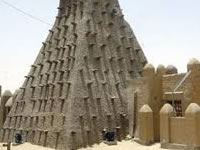 |
Timbuktu, MaliTimbuktu was once the center of the powerful Mali empire, becoming an important crossroads for trade of gold, salt, ivory, and slaves in the 1300s. Timbuktu was also the center of the Islamic learning and scholarship during this time and even hosted a flourishing book trade. |
| Back to Map | |
 |
Sahara DesertCovering 3.6 million square miles, the Sahara Desert is the world's largest non-polar desert. It is also the world's hottest and sunniest desert. Covering most of north Africa, the Sahara Desert is roughly the size of the entire United States. Windswept sand dunes in the desert can reach heights of nearly 600 feet. Parts of the Sahara Desert can go decades without receiving any rainfall. With some rare rainfall in the Sahara, the raindrops can evaporate before hitting the sandy surface. |
| Back to Map | |
 |
Great Mosque at DjenneThe Great Mosque at Djenne is the largest adobe building in the world. Located in western Mali, the original mosque was built in the 13th century, but was demolished in 1834. It was the center of one of the most important Islamic learning centers in the world. Thousands of Islamic students came to Djenne' from all over west Africa to study the religion. The city of Djenne is considered the oldest city in sub-saharan Africa. The current structure was completed in 1907. The mosque is one of the most important landmarks in all of Africa and the residents of Djenne participate in its maintenance during a unique annual festival. It was declared a UNESCO World Heritage Site in 1988. |
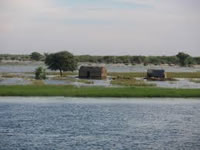 |
Niger RiverWith a course that stretches more than 2,600 miles, the Niger River is the principal river in western Africa, and the third-longest river in Africa behind the Nile and Congo Rivers. The Niger river flows through five African nations and is an important water source, particularly in the regions of the Sahara Desert in flows through.
|
| Back to Map | |
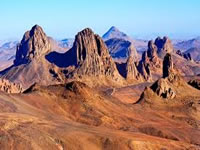 |
Adrar des Ifoghas
Adrar des Ifoghas is a massif that extends for nearly 97,000 square miles in Mali and into Algeria. A massif is not a mountain range, but rather, a series of faults in the Earth's crust that result in wide valleys and areas of rocks and granite. The area is famous for its many rock drawings and regions of petrified wood. Gazelles, antelopes, hyenas, and jackals are among the animals that can be found here.
|
| Back to Map | |
| Population: | 14,517,176 (2014) |
| Area: | 478,839 sq. miles |
| Capital City: | Bamako |
| Largest City: | Bamako |
| Currency: | West African CFA franc |
| Official Language: | French |
| GDP (Gross Domestic Product) | $10.32 Billion |
- Mali is the eighth largest nation in Africa, and 24th largest nation in the world in terms of area
- Mali is Africa's third largest exporter of gold
- Over 90% of Mali's population is Muslim
- Mali was once a powerful empire that stretched across western Africa. Timbuktu, Mali was once a major center of education and trade (slaves, gold, and salt) in the early parts of the second millennium.
- Mali was under French control from 1898 to 1960
- Mali is totally landlocked
- Mali is prone to droughts due to its arid climate
- Mali is one of the world's poorest country. The average worker earns about $130 per month.
- 90 percent of Mali's population lives in the southern portion of the country
- Only about 405 of Mali's population is literate
|
|
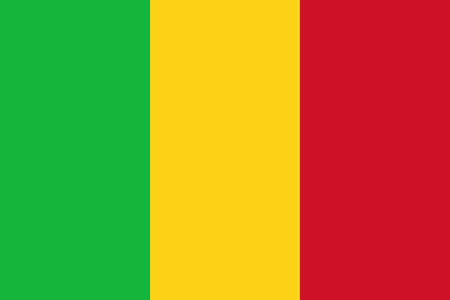 |
|
| In the Mali flag, the green color represents the fertility of the land, the gold represents the nation's mineral wealth, and the red represents the blood shed during the nation's battle for independence from France. | |